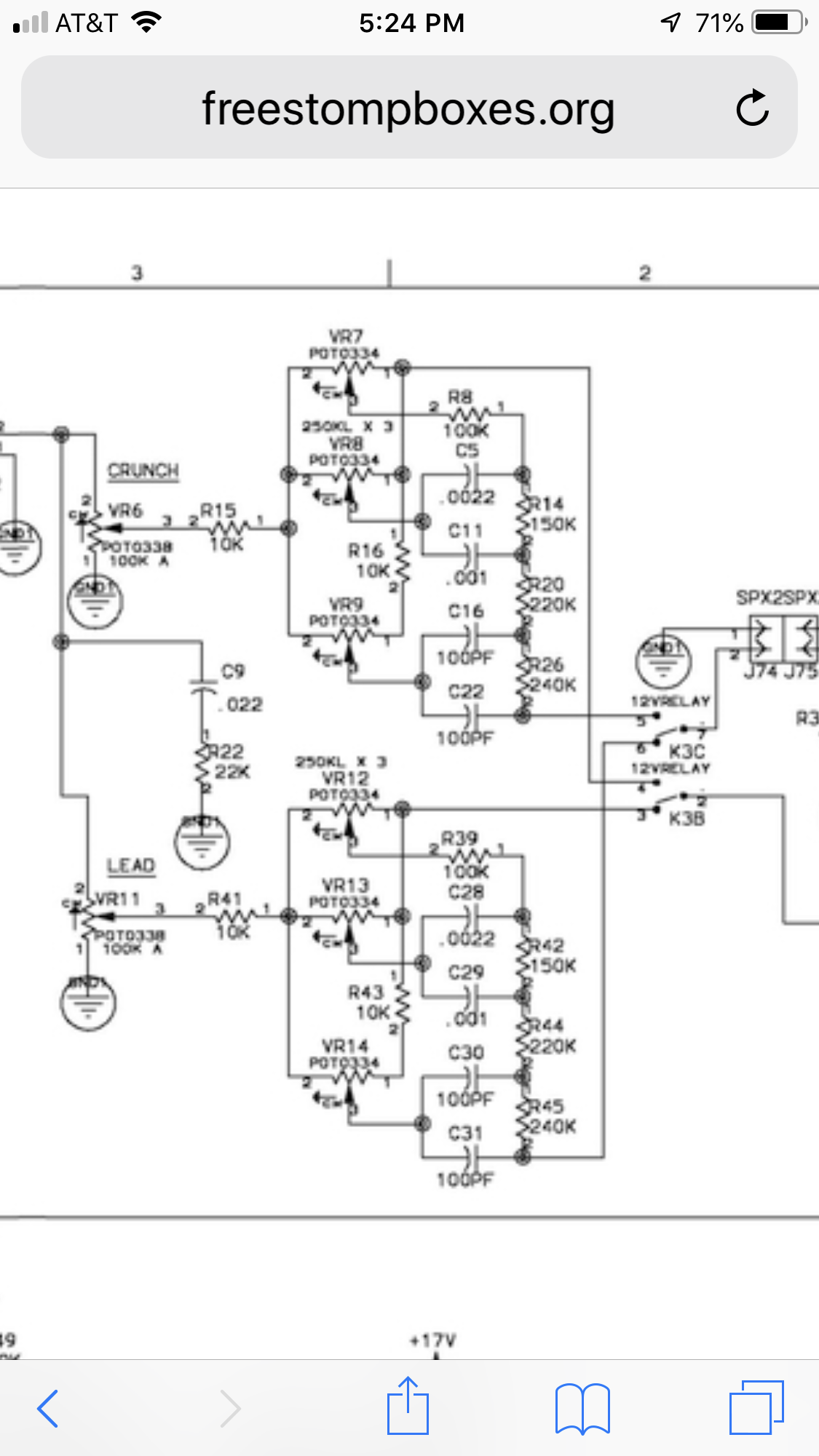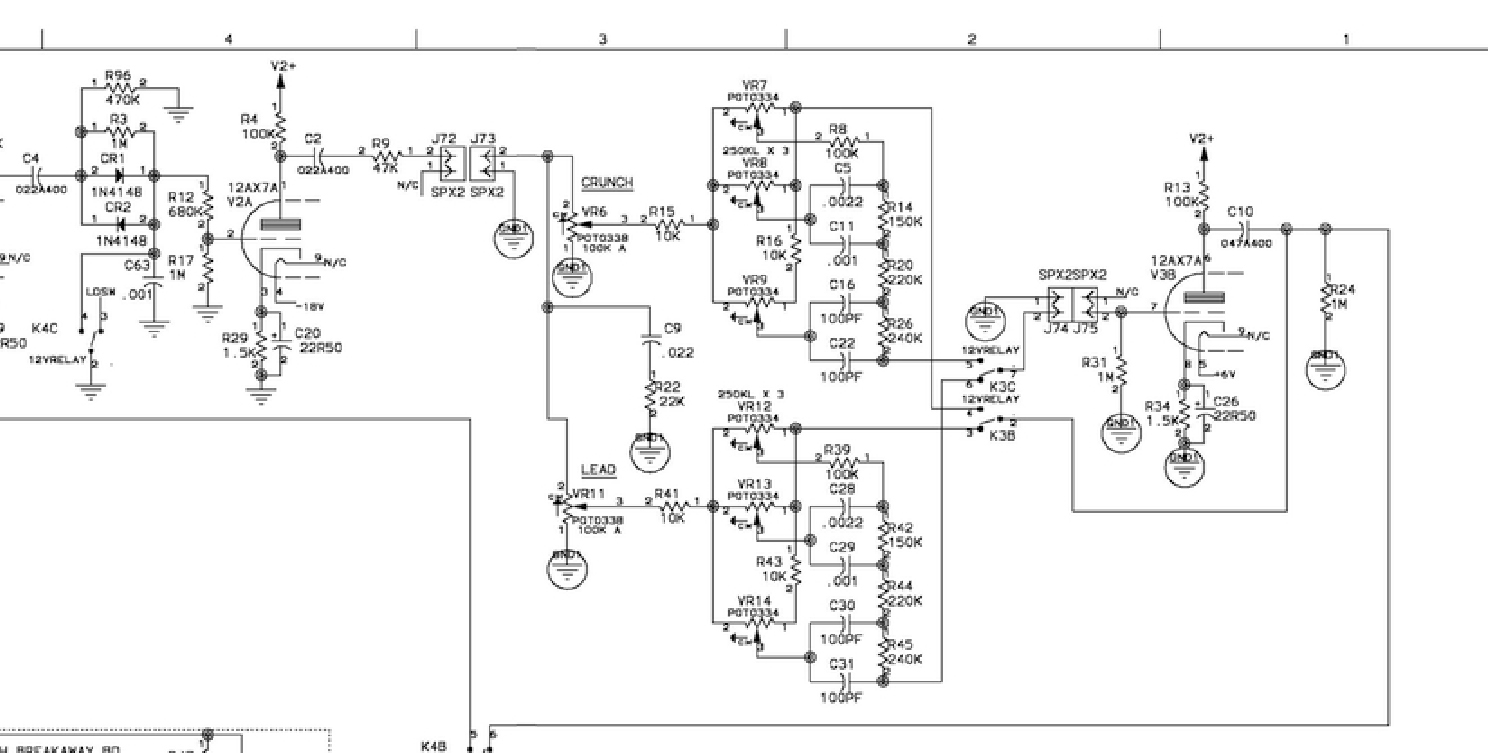Peavey active tone stack
|
This post was updated on .
 . Can someone tell me how this tone stack works. I know peavey used this tonestack through out the 1990’s. Used in solid state and tube amps. Some amps have a mid shift in it. The peavey rockmaster preamp has this tone stack sounds really awesome but some people don’t like active tone stacks say it’s hard to dial in.But how does the bottom control work does it just work off the 100k resistor. Thanks for info . Can someone tell me how this tone stack works. I know peavey used this tonestack through out the 1990’s. Used in solid state and tube amps. Some amps have a mid shift in it. The peavey rockmaster preamp has this tone stack sounds really awesome but some people don’t like active tone stacks say it’s hard to dial in.But how does the bottom control work does it just work off the 100k resistor. Thanks for info
|
|
Interesting.
I have been breadboarding some tonestacks these days, somehow I didn't come across this one. No idea about how it works, but if "active" is "powered" then this one seems passive... what bothers me a little bit is the odd lug numbering, 2 should be 3 as per drawing and viceversa  I'll breadboard it ASAP as I'm looking to build another ss preamp with tonestack and this one could be nice. Will report back! |
|
Actually it is active, I stand corrected.
Looking at the Peavey Triple XXX schematic, it *looks like* the bottom end of the circuit gets feedback by the 12AX7 that comes after. Or sthing like this, I'm no expert. If someone could point out how to replicate the feedback section with an Opamp or FET, I'd be grateful!  Would an usual conversion tube-to-fet suffice, or is there any simpler or more effective way to do it? I also have no idea how the SPX2 switch interacts with the valve. Would an usual conversion tube-to-fet suffice, or is there any simpler or more effective way to do it? I also have no idea how the SPX2 switch interacts with the valve.

|
|
In reply to this post by ibanez48
It looks like a clean blend for the EQ. Many tone stacks don't have any settings where the response is flat; i.e. the tone stack adds color at all settings, often through some kind of mid-scoop. The body control looks like it mixes the original signal into the output of the tone stack to remove some of that color. |
|
You know james brown went to work at peavey in the late 1980's. He is the one that designed the rockmaster preamp and its got the same tone stack in it except its got the mid shift in it were you pull the mid control out. The rockmaster is one mean preamp. The sound you can get out of it is crazy and they say its all got to do with the tone stack. James brown designed alot of amps at peavey and the main is the 5150. He sure did favor that active tone stack bottom/body/edge. I guess he is the one that designed it and were he come up with it i ain't got a clue lol. I have looked all over the internet for active tone stacks haven't come up with much. I have found a few but nothing like he uses. He almost used that active tone stack in all tube and trans tube circuits he designed. The only other amp maker that i know of that used active tone stacks in there tube and solid state amps is carvin. But the tone stack design is totaly diffetent there tone stacks are in the feedback loop of opamps. Were james brown used a tube or transistors to loop the tonestacks. The man is a genius i guess lol. It amazes me how they come up with stuff back in the 1980's did they have a bunch of guys in a backroom somewere with there bread boards coming up with these amp circuits lol. You would think alot of other amp manufactures would have caught on and used active tone stacks. I sure do like them but some say its to hard to dial in and prefer passive tone stacks. Oh and if you didn't know james brown is the owner/designer of amp tweaker pedals.
|
|
Just breadboarded it using a JFET instead of the actual valve.
Lug numbering is correct, and all pots are doing something, but they seem to interact with each other and affect the mids and treble way too much. I've only fiddled with it for 10 minutes so I can't decide if I like it or not  Also lowering one pot too much compared to the others results in a considerable volume drop. I'll check again tomorrow to see if I can get used to it. |
|
This post was updated on .
In reply to this post by ibanez48
Look at the tonestacks in the verified section. Read Freepo bax in the box his is a active tone stack. Definitely needs to be in the feed back loop for it to work right. The spx2 not a switch it’s a cable thats we’re they plug into.
|
«
Return to Open Chat
|
1 view|%1 views
| Free forum by Nabble | Edit this page |

